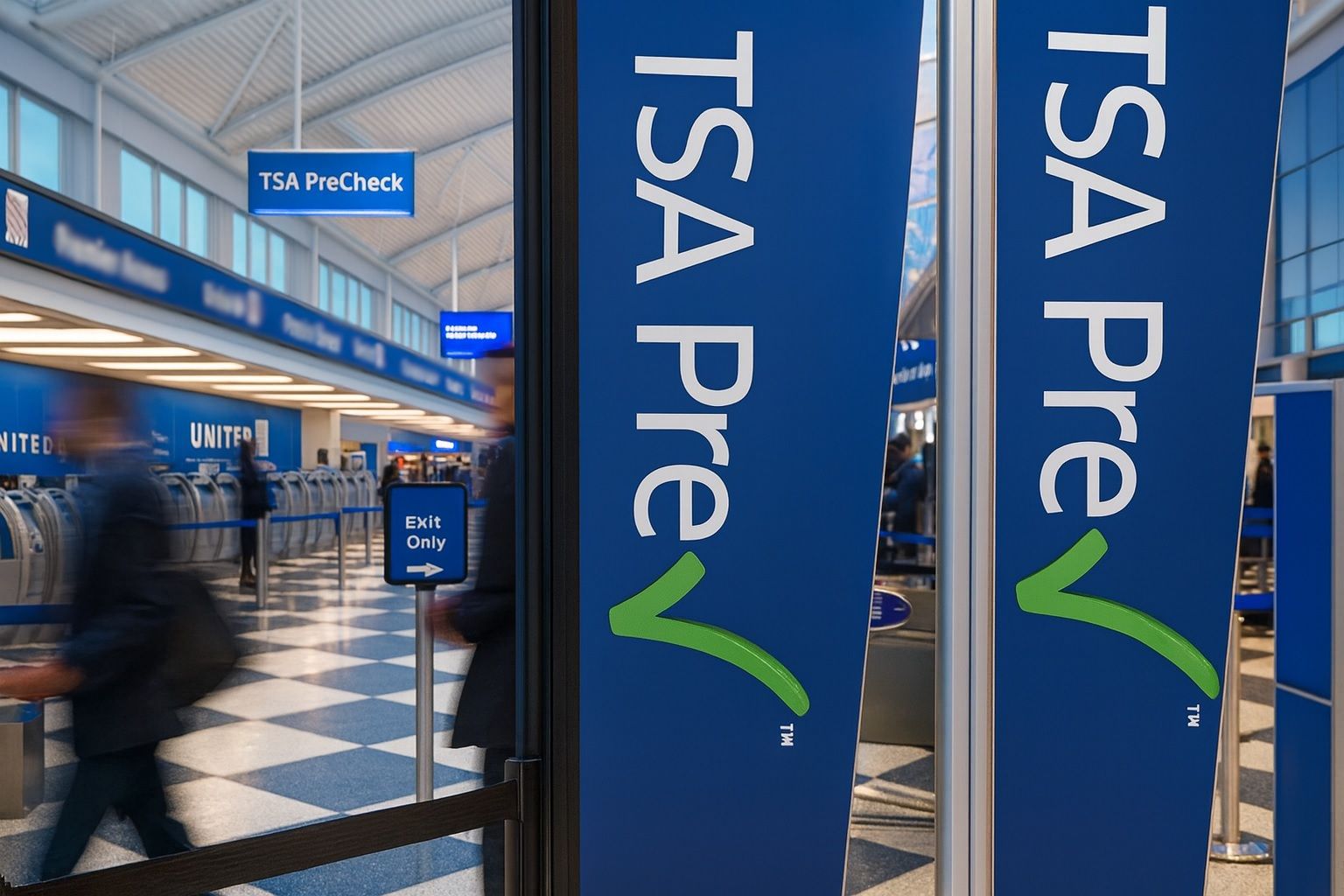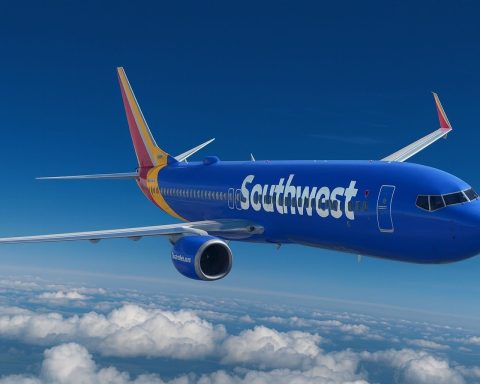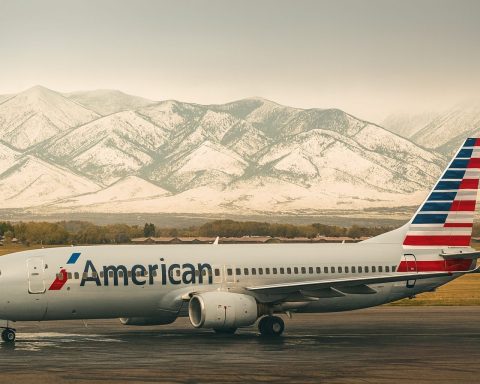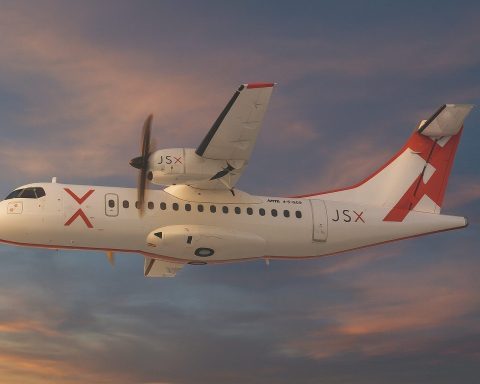- Shutdown in Week 2: A partial U.S. federal government shutdown began on October 1, 2025 and is ongoing with no funding deal yet in sight [1]. Many federal operations are paused, but critical aviation functions continue under contingency plans.
- TSA & Air Traffic Still Operating (Unpaid): Airport security checkpoints and air traffic control remain up and running. Some 63,000 aviation staff – about 13,000 air traffic controllers and 50,000 TSA officers – must still report to work without pay during the shutdown [2]. Past shutdowns show that if workers start missing paychecks, sick calls can rise, straining the system.
- TSA PreCheck _Stays Open_: The trusted traveler programs are forging ahead. TSA PreCheck applications and renewals are not suspended – as a fee-funded program, it continues enrolling new members despite the shutdown [3]. Airports nationwide are even hosting TSA PreCheck enrollment events as scheduled (e.g. this week in La Crosse, WI and Amarillo, TX), underscoring that PreCheck services remain available.
- Global Entry Faces Slowdowns: The Global Entry program (run by U.S. Customs and Border Protection) isn’t entirely immune. Online applications remain open during the shutdown, but in-person enrollment interviews may be delayed or canceled since they are considered “non-essential” appointments [4]. This could add to the backlog of pending Global Entry approvals if the funding lapse drags on.
- Early Travel Impacts Minimal – For Now: In the immediate term, flying continues normally – planes are taking off, TSA screening lines are staffed, and passports are still being processed (passport services are sustained by fee funding) [5]. No major nationwide airport disruptions have hit yet. However, minor cracks are showing: by Oct. 7 (one week in), staffing shortages contributed to 3,000+ flight delays in a single day [6] [7]. Some hub airports like Chicago O’Hare saw average delays over 40 minutes as the FAA reduced flight throughput due to controller shortfalls [8].
- Rising Risk of Delays if Standoff Continues:Experts warn that travel headaches will worsen if the shutdown persists. During the record 35-day shutdown in 2018-2019, TSA sick-outs spiked and some airport checkpoints had to close, causing marathon security lines [9]. Already in this shutdown, officials report a “slight increase” in air traffic controllers calling in sick, and in one week staffing was cut by 50% in some control facilities, forcing traffic slowdowns [10]. Airlines are watching warily: for example, on Oct. 7 Southwest had 500+ flight delays and American Airlines 400+ due to staffing issues [11]. If unpaid TSA officers begin to stay home in larger numbers, longer airport security lines and flight schedule disruptions could quickly mount.
- $1 Billion/Week at Stake for Travel Industry: The U.S. Travel Association estimates the shutdown could cost the travel sector about $1 billion in lost economic activity per week [12]. Tourism executives are urging a swift resolution, fearing reduced travel demand if federal services (like national parks, air travel infrastructure, and trusted traveler programs) start to falter. So far, leisure and business travel haven’t been broadly curtailed, but prolonged uncertainty poses a real economic threat.
- Wall Street Shrugs (So Far): Notably, financial markets remain unfazed by the budget drama. In fact, U.S. stock indexes surged to record highs in early October even as the shutdown wore on – the Dow Jones Industrial Average climbed above 46,500 for the first time [13]. Market experts say investors have largely “shrugged off” the shutdown [14], betting it will be resolved before it severely dents the economy or travel demand. Airlines and travel stocks have seen little volatility to date. (For instance, airline share prices have been steady this month, and Telos Corp. – a TSA PreCheck enrollment contractor – hit a 52-week stock high in early October amid ongoing traveler enrollment demand [15].) However, this calm could be short-lived if aviation turmoil worsens or the impasse drags into the holiday travel season.
Government Shutdown 2025: What It Means for Travelers
After a congressional budget impasse, parts of the U.S. government shut down on Oct. 1, 2025. Many federal agencies closed or reduced operations. Crucially for travelers, aviation security and safety personnel are deemed “essential” – so airports have not closed and flights are still operating [16]. TSA screening checkpoints remain open at airports nationwide, and air traffic controllers are on the job guiding planes. This prevents an immediate aviation standstill. “Travelers don’t have to worry about canceling trips” due to the shutdown in the short run, one expert explains [17].
That said, the shutdown is not “business as usual” behind the scenes. Tens of thousands of TSA officers and FAA air traffic controllers are working without pay until funding is restored [18]. History shows that as unpaid weeks add up, morale and staffing can suffer. During the last extended shutdown, about 10% of TSA staff began calling out sick at its peak, contributing to longer lines [19] [20]. This time, the longer Congress stalls, the greater the strain on the system each day. As one veteran air traffic official put it, controllers can keep planes moving safely, but “if we don’t have [enough] controllers, we’ll slow traffic” to maintain safety margins [21]. In practice, that means flight delays – which are already emerging a week into the standoff.
Beyond staffing, some non-urgent aviation activities are on hold. For example, the FAA has stopped hiring and training new controllers during the funding lapse [22], which could set back efforts to ease the existing controller shortage. Airworthiness inspections and new aircraft certifications may also be delayed. National parks and monuments are largely unstaffed too, so travelers may find limited services or closed facilities at some park sites (though most park grounds remain accessible) [23] [24]. Passport processing is continuing for now – it’s funded by applicant fees – but passport offices located in federal buildings could close and overall processing might slow if the shutdown persists [25]. In short, the immediate impact on travelers has been modest, but cracks are showing as the shutdown enters its second week.
TSA PreCheck & Global Entry: Enrollment Services Uninterrupted
One piece of good news: Trusted Traveler programs like TSA PreCheck and Global Entry are largely operating normally despite the shutdown. The Transportation Security Administration confirmed that TSA PreCheck enrollment is ongoing – the program’s operations are funded by the fees paid by applicants, insulating it from the federal budget freeze [26]. This means travelers can still apply for PreCheck or renew their membership on schedule, and enrollment centers nationwide remain open. In fact, local airports are proceeding with special “TSA PreCheck enrollment fairs” as planned. For example, the La Crosse Regional Airport in Wisconsin went ahead with its TSA PreCheck enrollment event this week despite the shutdown, and the Rick Husband Amarillo International Airport in Texas is hosting a PreCheck sign-up event Oct. 7–10 as originally scheduled. There’s been no word of any cancellations, highlighting that the PreCheck program is running at full steam.
Why is PreCheck unaffected? It comes down to funding structure. TSA PreCheck (and its newer sibling TSA PreCheck® for Armed Forces, etc.) is funded by application fees rather than annual Congressional appropriations [27]. In a shutdown, agencies can continue activities that have their own dedicated funding. TSA uses private contractors for much of the enrollment process (fingerprinting, background checks), and those contractors remain at work. As travel expert Kyle Potter notes, “TSA PreCheck enrollment centers will continue to operate, so you’ll still be able to apply…during a shutdown” [28]. The takeaway: if you were planning to get PreCheck to speed up your holiday travels, you can proceed as normal – no need to delay obtaining your Known Traveler Number.
Global Entry, which expedites U.S. customs clearance for international travelers, is a slightly different story. Applications for Global Entry (and related programs like SENTRI and NEXUS) can still be submitted online, but the final step – the in-person interview – may be harder to come by. U.S. Customs and Border Protection, which administers Global Entry, has furloughed some non-essential staff. Enrollment Center interviews for Global Entry were canceled in the 2018-19 shutdown, and officials warn there could be renewed delays or appointment cancellations now if CBP staff are redeployed to critical security roles [29]. In other words, if you’re a first-time Global Entry applicant waiting to schedule an interview, be prepared for possible postponements. (Tip: Enrollment on Arrival remains an option – you might complete your interview when returning from an international trip at a participating airport, provided CBP officers are available.) The good news is that existing Global Entry members stay active – those up for renewal get an automatic extension of benefits for up to 24 months if their renewal is in process [30]. Mobile Passport is also a handy backup for international arrivals if you haven’t gotten Global Entry. Overall, Trusted Traveler memberships are not being revoked or halted due to the shutdown – it’s mainly new enrollment that could see timing hiccups.
Airports Under Strain: Staffing Shortages and Flight Delays
With the shutdown now past its first week, signs of strain are emerging in the air travel system. Thus far, there have been no mass cancellations or airport closures attributable to the funding fight. But flight delays are rising in a pattern reminiscent of previous shutdowns. On October 7, the FAA reported staffing issues at multiple air traffic control centers, causing delays at major airports like Chicago O’Hare, Newark, Atlanta, Houston, and Dallas [31] [32]. By that afternoon, over 3,000 U.S. flights were delayed in one day [33]. At O’Hare, arrival rates were throttled to manage limited controller staffing, leading to average delays of 41 minutes [34]. Newark Liberty had inbound flights held on the ground for up to 30 minutes due to staffing shortfalls [35]. And in Nashville, the situation got so bad that the airport announced it would curtail nighttime operations on Oct. 7, handing off duties to a distant control center because local staffing was insufficient [36].
Transportation Secretary Sean Duffy confirmed a “slight increase” in controller sick leave usage as unpaid days accumulate [37]. In some regions, air traffic staffing has been cut by 50% since the shutdown began [38]. The FAA’s contingency plan is essentially to slow things down to match the available manpower: “If we don’t have controllers, we’re going to…slow traffic,” Secretary Duffy explained, emphasizing safety will be maintained above all [39]. Practically, this means longer flight times and delays cascading through the system until staffing stabilizes.
TSA checkpoint staffing is holding up slightly better so far, but there are warning signs. TSA reports that security wait times at most airports have remained within normal ranges in the first week of the shutdown. Yet, some travelers are already noticing pockets of longer lines during peak hours. An early concern is morale and retention – TSA officers are some of the lowest-paid federal employees [40], and asking them to work indefinitely without pay is a tall order. In the 2019 shutdown, checkpoint wait times ballooned at some airports when growing numbers of officers called out. Miami International Airport even had to shut an entire terminal’s security checkpoint for part of the day during that episode because not enough TSA staff were available [41]. So far in 2025, no such drastic measures have been needed, but officials are monitoring staffing levels day by day. TSA has reminded officers that Congress – not TSA – will ultimately pay their earned wages once the government reopens, hoping to reassure workers their sacrifice isn’t for nothing.
Airlines are adjusting on the margins. Major carriers like Southwest and American each saw hundreds of delays on Oct. 7 as noted above [42]. Some airlines have proactively built a bit of extra buffer into schedules at the busiest hubs, anticipating ground delays. Industry group Airlines for America warned that “any prolonged shutdown could seriously disrupt air travel”, both due to staffing and because training and technology upgrades are on pause. The FAA’s modernization projects (like deploying new radar or updating computer systems) are frozen during the funding lapse, which in the long run can exacerbate delays. However, airline executives this week struck an optimistic tone that a solution will come before the holiday travel rush. Delta Air Lines’ CEO noted that demand for flights remains strong and said the airline is “monitoring the situation closely” but has not cut any flights. Still, passengers should stay alert to airline advisories – if staffing issues worsen, airlines may issue waivers allowing free rebooking for those who want to avoid potential chaos.
What Travelers Should Do and Expect Next
For now, travelers should generally stick to their plans, but with caution. Travel experts advise a few prudent steps while the shutdown lasts:
- Arrive Early for Flights: Give yourself extra time at the airport, especially at busier hubs or if the shutdown stretches on. With fewer TSA agents or flight controllers on duty, lines and delays can spike unpredictably. A good rule of thumb is to add 30+ minutes to your normal airport arrival time, just in case [43] [44].
- Use Trusted Traveler Perks: If you have TSA PreCheck, use it – it can significantly shorten wait times since those lanes are typically faster even if TSA staff numbers dip. Likewise, if you have CLEAR or other services, take advantage. (Note: CLEAR’s private security program is unaffected by the shutdown, as it’s a private company operating at airports with TSA oversight.) For international trips, consider using Mobile Passport Control as a backup if you don’t have Global Entry and encounter interview delays.
- Stay Informed: Situations can change quickly. Check your airline’s flight status and signup for text/email alerts. Follow your departure airport on social media or visit its website – many airports are posting updates on security line conditions or any checkpoint changes. The TSA and FAA websites are not updating regular news during the shutdown, but major news outlets and local news will report any significant disruptions. If the shutdown continues, be alert around Day 10 onward, as that’s when prior shutdowns saw more employees unable to afford commuting to work without pay.
- Be Flexible with Travel Plans: If you have a critical trip (e.g. important meeting or event), you might build in a cushion – for example, flying in a day early – in case of unexpected delays or cancellations. Have a backup plan if possible. Fortunately, airlines have not reported staffing shortages of their own, so the primary risk is on the government side (TSA/FAA).
- Advocate & Be Patient: Remember that frontline workers – the TSA officer checking your ID, the controller handling your flight – are doing their best under stress. Patience and kindness go a long way in tense times. Some travelers have even taken to bringing snacks or thank-you notes for TSA staff at the checkpoint. It’s also appropriate to let your elected representatives know how important a well-functioning air travel system is to you; pressure on lawmakers can hasten a resolution.
As the shutdown persists, analysts are watching two key pressure points: the first missed payday for federal workers (when employees start missing paychecks, financial hardship grows) and the approach of the busy holiday travel season. In this 2025 shutdown, the first missed paycheck date is around mid-October. Indeed, by Oct. 14, air traffic controllers are set to miss a paycheck for work already performed [45], which could intensify staffing issues. And by early November, millions of Americans will start flying for Thanksgiving – a peak travel period when the system will be under maximum strain. If the shutdown is still unresolved by then, airlines and government agencies alike could face an unprecedented challenge. Some experts predict that, much like in 2019, mounting airport delays could be the tipping point that forces a political compromise [46]. “When flights to New York started backing up [in 2019], it put pressure on lawmakers to quickly end the standoff,” Reuters noted of that episode [47]. A similar dynamic may play out if holiday travel is threatened this year.
Conversely, if a funding deal is reached soon (many in Washington are hoping for a short-term budget patch to at least get through the holidays), the travel industry expects to bounce back quickly. Airlines would resume normal operations, and any backlog – whether in Global Entry interviews or air traffic training – would begin to clear. There’s a precedent for rapid recovery: after the 2019 shutdown ended, TSA and FAA operations normalized within days, aside from processing backlogs. Travelers would likely notice little lasting impact, especially with spring and summer 2026 still far off.
Economic and Industry Outlook: Cautious Optimism
From an economic standpoint, the travel sector and investors remain cautiously optimistic that this shutdown will be short-lived. Wall Street’s reaction has been surprisingly upbeat – rather than tanking on shutdown fears, the stock market has hit new heights. In the first week of October, the S&P 500 and Dow notched all-time record highs [48]. The Dow Jones index broke above 46,500 points for the first time ever [49], even as the federal government was largely closed for business. This rally suggests that traders anticipate an eventual resolution and are more focused on other factors, like potential Federal Reserve interest rate cuts and a cooling of inflation [50], which are seen as positive for the economy [51]. In other words, the market is betting that the shutdown is a temporary political drama that won’t severely harm corporate earnings or consumer spending. History supports this to an extent: past shutdowns (which typically lasted only days or a few weeks) have had minimal lasting impact on GDP or stocks [52].
Travel-related stocks have been stable. Large U.S. airlines have not issued profit warnings or revised forecasts due to the shutdown at this point. Cruise lines and hotels also report no material dip in bookings in early October. One travel niche actually seeing a boost is the TSA PreCheck enrollment industry – showing how traveler demand for convenience is unhindered by political turmoil. Telos Corporation, one of TSA’s official PreCheck enrollment partners, recently expanded to over 350 enrollment centers nationwide [53] as it sees strong demand. Telos’s stock (NASDAQ: TLS) climbed above $7 in early October – a one-year high – reflecting investor confidence in the continued growth of trusted traveler programs. While a prolonged shutdown could eventually dampen travel appetite (especially for government-related travel and tourism spending in areas like national parks), for now the travel sector is largely powering through.
Analysts do warn that if the shutdown were to become protracted (imagine a scenario of many weeks or even months, which most consider unlikely), the economic ripple effects would grow. Consumer confidence could erode, particularly if visible problems like airport delays become nightly news. A significant drop in Thanksgiving or December holiday travel would hurt airlines and hospitality businesses in Q4. But at this juncture, most forecasters aren’t sounding alarm bells. Moody’s Analytics estimated that a short shutdown might shave only 0.1-0.2 percentage points off quarterly GDP, a blip in a multi-trillion dollar economy. That said, certain regions and industries feel disproportionate pain – for example, cities near national parks or Washington D.C. tour operators may see sharp revenue declines while the parks and museums are closed.
The bottom line for travelers and investors alike is a hopeful one: as long as Congress resolves the funding impasse in the near future, the travel system will endure with only minor bruises. TSA PreCheck lines will still zip trusted travelers through security, Global Entry kiosks will still speed you past Customs, and flights will largely still fly. “In the short term, there likely won’t be many immediate impacts for travelers…planes will continue flying and TSA checkpoints will remain open,” Thrifty Traveler observes [54]. It’s the long term we must watch – each additional week of stalemate increases the risk of compounding problems. For now, though, America’s airports are open, and the aviation engine is humming along – albeit on thinner ice each day.
Forecast: If a stopgap funding bill or budget deal is struck in the coming days, travelers may remember October 2025 as merely a brief episode of uncertainty with minimal disruption. Trusted traveler programs will proceed with record enrollment (2025 was already a banner year for TSA PreCheck signups), and the focus will shift back to typical holiday travel prep. However, if the shutdown stretches further into October, expect mounting pressure on lawmakers from airlines, travel groups, and the flying public. Washington knows that significant flight delays or safety concerns are politically damaging, so ironically, air travel impacts might become the catalyst for ending the impasse. In the meantime, stay informed, pack your patience along with your carry-on, and take some comfort that your next flight – and your next TSA PreCheck appointment – should still go ahead, even in this unusual moment in U.S. politics.
Sources: Government and news reports on the shutdown’s impact on travel [55] [56] [57]; TSA and CBP statements on Trusted Traveler program status [58] [59]; expert analysis from Thrifty Traveler and NerdWallet [60] [61]; Reuters and TS2 Tech coverage of aviation delays and market reaction [62] [63]. All data current as of October 9, 2025.
References
1. ts2.tech, 2. www.reuters.com, 3. thriftytraveler.com, 4. thriftytraveler.com, 5. thriftytraveler.com, 6. www.reuters.com, 7. www.reuters.com, 8. www.reuters.com, 9. thriftytraveler.com, 10. www.reuters.com, 11. www.reuters.com, 12. www.nerdwallet.com, 13. ts2.tech, 14. ts2.tech, 15. finviz.com, 16. thriftytraveler.com, 17. www.nerdwallet.com, 18. www.reuters.com, 19. www.nerdwallet.com, 20. www.nerdwallet.com, 21. www.reuters.com, 22. thriftytraveler.com, 23. www.nerdwallet.com, 24. www.nerdwallet.com, 25. thriftytraveler.com, 26. thriftytraveler.com, 27. www.nerdwallet.com, 28. thriftytraveler.com, 29. www.nerdwallet.com, 30. www.aila.org, 31. www.reuters.com, 32. www.reuters.com, 33. www.reuters.com, 34. www.reuters.com, 35. www.reuters.com, 36. www.reuters.com, 37. www.reuters.com, 38. www.reuters.com, 39. www.reuters.com, 40. thriftytraveler.com, 41. thriftytraveler.com, 42. www.reuters.com, 43. thriftytraveler.com, 44. thriftytraveler.com, 45. www.reuters.com, 46. www.reuters.com, 47. www.reuters.com, 48. ts2.tech, 49. ts2.tech, 50. ts2.tech, 51. ts2.tech, 52. ts2.tech, 53. finviz.com, 54. thriftytraveler.com, 55. www.reuters.com, 56. www.reuters.com, 57. www.nerdwallet.com, 58. thriftytraveler.com, 59. thriftytraveler.com, 60. thriftytraveler.com, 61. www.nerdwallet.com, 62. www.reuters.com, 63. ts2.tech










